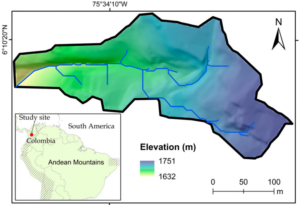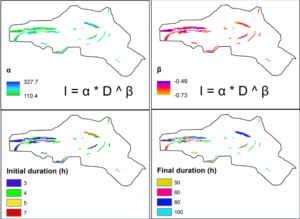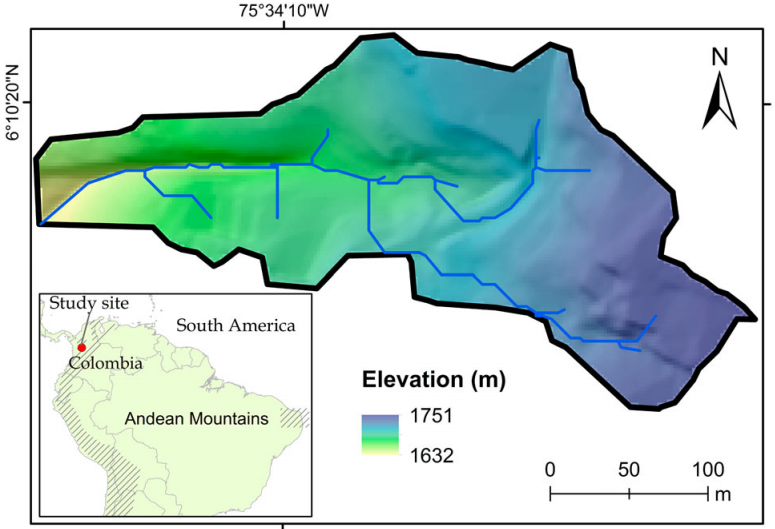The thresholds represent rainfall, soil moisture or suction conditions that when reached or exceeded could trigger landslides. Rainfall intensity (I) and duration (D) thresholds are the most common in the scientific literature using this power-law equation:
I = α D^β
where α is the scale parameter (intercept) and β is the shape (slope) parameter of the threshold curve.
I developed two Python programs for rainfall thresholds (landslides) definition based on physically-based modelling (TRIGRS). Both are presented as an example and applied in a tropical mountain basin of Envigado (Colombia).

Figure 1. Localization of a basin (Envigado, Colombia) on which the methodologies for rainfall thresholds definition were applied.
In the first method the threshold curve is obtained for a study site (e.g. basin, sub-basin, slope unit) usually implemented in small areas (<1 km^2, but not limited by the methodology). Implementation of this method is presented in these research articles:

Figure 2. Rainfall thresholds for a basin in Envigado (Colombia) using two physically-based models (adapted from Marín et al., 2019).
In the second method, distributed rainfall thresholds are obtained and maps of the intensity conditions for possible landslide occurrence are represented by the power-law threshold curve (for each grid cell). Only grid cells (representing terrain portions) that are predicted to fail (for almost any rainfall conditions) can develop rainfall thresholds.

Figure 3. Rainfall thresholds for grid cells of the Envigado basin.


